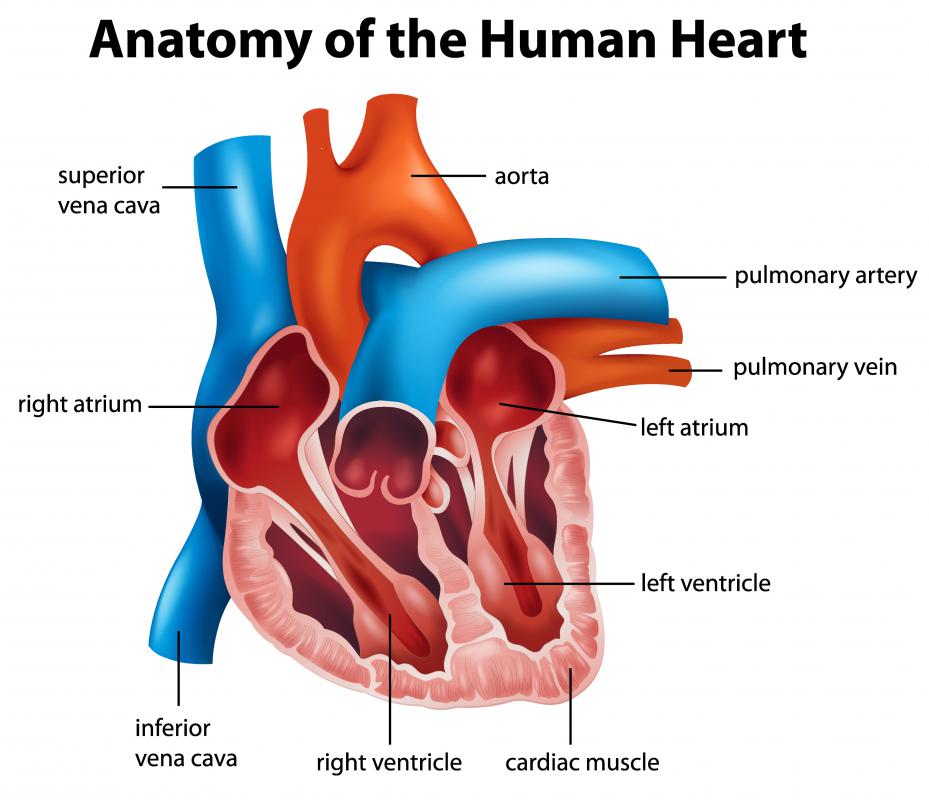At WiseGEEK, we're committed to delivering accurate, trustworthy information. Our expert-authored content is rigorously fact-checked and sourced from credible authorities. Discover how we uphold the highest standards in providing you with reliable knowledge.
What Is an Atrioventricular Fistula?
An atrioventricular fistula is a type of connection created between a vein and an artery. This abnormal connection increases the diameter of a blood vessel and can alter the way in which blood flows in the body. It is often surgically created in patients undergoing kidney dialysis treatments to grant access to the necessary blood vessels and provide a site to receive the purified blood. It can, however, occur due to a congenital abnormality, due to arterial disease, or as a result of injuries like wounds from gun shots and stabbing.
One of the primary benefits of a surgically created atrioventricular fistula is that it can be used for several years in patients with chronic kidney conditions without needing to be replaced. During hemodialysis, blood is removed from blood vessels, purified and subsequently returned to the veins. The fistula is connected to the dialysis machine, and blood leaves and returns to the fistula site during treatment. The most common site for an atrioventricular fistula used in dialysis is the forearm. By connecting an artery with a vein, the resultant blood vessel is large enough to handle increased volumes of blood.

After an atrioventricular fistula is surgically created for a kidney patient, it typically takes between one and three months before it can be used for dialysis treatment. The site must be allowed to heal adequately to be able to tolerate the pressure of blood flow. Patients may not be allowed to drive or lift heavy weights while the fistula heals. Patients can be trained to monitor their fistulas and recognize signs of potential problems, such as blood clots.

Some types of atrioventricular fistulas can be harmful to a person's health rather than beneficial, and this is typically the case when the fistula results from injury or involves a major artery in the body. For example, if a fistula is created involving a part of the aorta, the heart may have to work harder to ensure that sufficient amounts of blood reach all necessary tissues. Some large congenintal fistulas may require surgical correction, depending on their location and the patient's overall health status. In many instances, blood will travel from an artery directly to a vein, instead of entering capillaries as is the expected path of normal blood flow. This can be dangerous because many tissues receive their blood supply from small capillaries and insufficient blood flow can result in tissue death.
AS FEATURED ON:
AS FEATURED ON:














Discuss this Article
Post your comments